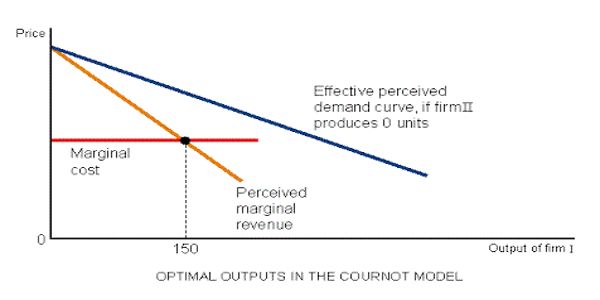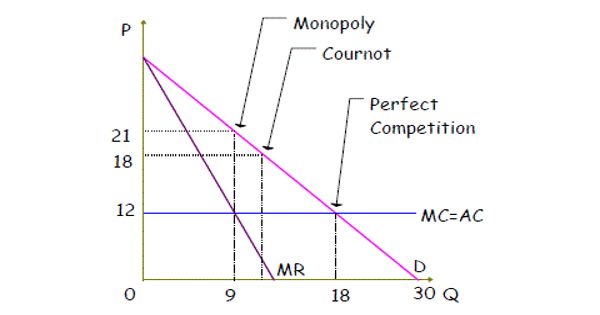Cournot competition is an economic model in which competing firms choose a quantity to produce independently and simultaneously. It is an economic model used to describe an industry structure in which companies compete on the amount of output they will produce, which they decide on independently of each other and at the same time. The model applies when firms produce identical or standardized goods and it is assumed they cannot collude or form a cartel.
It is named after Antoine Augustin Cournot (1801–1877) who was inspired by observing competition in a spring water duopoly. The idea that one firm reacts to what it believes a rival will produce forms part of the perfect competition theory. It has the following features:
- There is more than one firm and all firms produce a homogeneous product, i.e. there is no product differentiation;
- Firms do not cooperate, i.e. there is no collusion;
- Firms have market power, i.e. each firm’s output decision affects the good’s price;
- The number of firms is fixed;
- Firms compete in quantities, and choose quantities simultaneously;
- The firms are economically rational and act strategically, usually seeking to maximize profit given their competitors’ decisions.

Cournot competition is a model of imperfect competition in which two firms with identical cost functions compete with homogeneous products in a static setting. It was developed by Antoine A. Cournot in his “Researches Into the Mathematical Principles of the Theory of Wealth”, 1838.
Cournot’s duopoly represented the creation of the study of oligopolies, more particularly duopolies, and expanded the analysis of market structures which, until then, had concentrated on the extremes: perfect competition and monopolies.
Advantages of Cournot Competition
The Cournot model is applicable when companies produce identical or standardized goods. It assumes they cannot collude or form a cartel, have the same view of market demand, and are familiar with competitor operating costs.
The Cournot model has some significant advantages. The model produces logical results, with prices and quantities that are between monopolistic (i.e. low output, high price) and competitive (high output, low price) levels. It also yields a stable Nash equilibrium, an outcome from which neither player would like to deviate unilaterally.
Information Source:
















